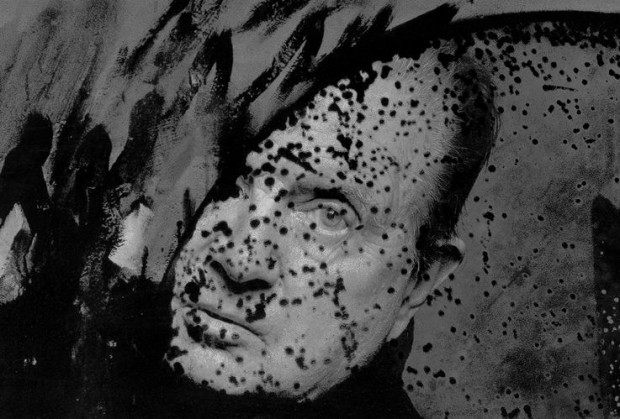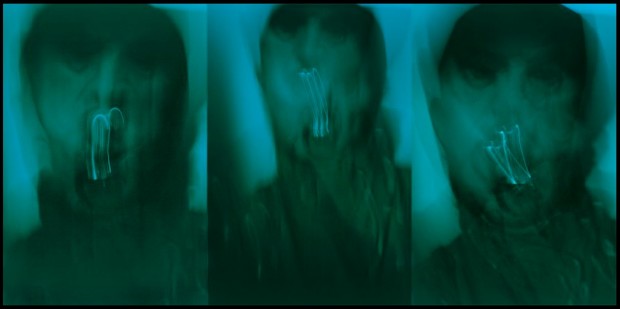An iconographic and text archive related to communication, technology and art.
FB: Your painting is often described as violent…
My painting is not violent; it’s life that is violent. I have endured physical violence, I have even had my teeth broken. Sexuality, human emotion, everyday life, personal humiliation (you only have to watch television)―violence is part of human nature. Even within the most beautiful landscape, in trees, under the leaves the insects are eating each other; violence is part of life.
☛ “Francis Bacon: I painted to be loved” interview by Francis Giacobetti conducted on February 1992, published in The Art Newspaper, no. 137, June 2003, pp. 28-29. PDF.
(The interview published in The Art Newspaper is an excerpt of a much longer interview Francis Bacon did with his friend Francis Giacobetti between September 1991 and ealry 1992. Another selection of excerpts were also published in The Independent – Saturday Magazine on June 14, 2003 under the title “The Last Interview” (PDF). For more information about this “last interview”, see after the following quotes. It’s also worth noting that the BBC also claims to have recorded Francis Bacon’s last interview, although it has nothing to do with the discussions Bacon had with his friend Giacobetti; see “‘I’ll go on until I drop’; Francis Bacon’s last interview” broadcast on August 17, 1991)

In the excerpts published by The Art Newspaper, Francis Bacon goes on to discuss flesh, meat and screaming:
FG: What does flesh represent to you?
Flesh and meat are life! If I paint red meat as I paint bodies it is just because I find it very beautiful. I don’t think anyone has ever really understood that. Ham, pigs, tongues, sides, of beef seen in the butcher’s window, all that death, I find it very beautiful. And it’s all for sale―how unbelievably surrealistic! […]
FG: The scream?
We are born with a scream; we come into life with a scream, and maybe love is a mosquito net between the fear of living and the fear of death. That was one of my real obsessions. The men I painted were all in extreme situation, and the scream is a transcription of their pain.
Animals scream when they are frightened or in pain, so do children. But men are more discreet and more inhibited. They do not cry or scream except in situations of extreme pain. We come into this world with a scream and we often also die with a scream. Perhaps the scream is the most direct symbol of the human condition.

In the excerpts published by The Independent Magazine, one can find a similar observation:
FG: What is your vision of the world?
FB: Since the beginning of time, we have had countless examples of human violence even in our very civilised century. We have even created bombs capable of blowing up the planet a thousand times over. An artist instinctively takes all this into account. He can’t do otherwise. I am a painter of the 20th century: during my childhood I lived through the revolutionary Irish movement, Sinn Fein, and the wars, Hiroshima, Hitler, the death camps, and daily violence that I’ve experienced all my life. And after all that they want me to paint bunches of pink flowers…But that’s not my thing. The only things that interest me are people, their folly, their ways, their anguish, this unbelievable, purely accidental intelligence which has shattered the planet, and which maybe, one day, will destroy it. I am not a pessimist. My temperament is strangely optimistic. But I am lucid.

Bacon’s comments reminded me of Werner Herzog’s remarks recorded by Les Blank in her documentary Burden of Dreams (1982, IMDb) about the production of Fitzcarraldo (listen to it on YouTube):
Kinski always says it’s full of erotic elements. I don’t see it so much erotic. I see it more full of obscenity. It’s just – Nature here is vile and base. I wouldn’t see anything erotical here. I would see fornication and asphyxiation and choking and fighting for survival and… growing and… just rotting away. Of course, there’s a lot of misery. But it is the same misery that is all around us. The trees here are in misery, and the birds are in misery. I don’t think they – they sing. They just screech in pain.(transcription retrieved from IMDb)
Previsouly here: Francis Bacon: “If they were not my friends, I could not do such violence to them.” (1966)
• • •
Francis Giacobetti (official website) is a photographer and filmmaker. He was born in Marseille, France, in 1939. He worked for various magazines and is known as a well established portrait photographer (Art Newspaper tells us he took the portrait of both Gabriel García Márquez and the Dalai Lama). He also directed Emmanuelle: L’antivierge in 1975 (IMDb).
The series of experimental portrait he took of Francis Bacon are famous. They were first exposed at Malborough Gallery, in London, in 2003: “Francis Giacobetti: Portraits of Francis Bacon”. It is still possible to browse trough many of Giacobetti’s photos on the gallery’s website:
It is eleven years since Francis Bacon died, and here today is a conclusion to that event. During the end of 1991 and the start of 1992, Francis Giacobetti took hundreds of photographs of the master and his world. Never had Bacon confided for so long and so often to the watchful eye of a photographer. For hour after hour they conversed on matters of death, painting, the masters they admired, the painters they hated, and on colour, love, instinct, photography, pain, sex and life…quite simply, their life.
Used version of the accompanying catalogue published alongside the exhibition in 2003 (London: Marlborough Fine Art Ltd.) can still be found online (see for example Abebooks). One can also browse through Giacobetti’s photos on his official website: see “Work”. 76 items related to Francis Bacon are offered to view.
The Independent Magazine provides more information about this “last interview” of Francis Bacon by his friend Francis Giacobetti:
In the final months of his life, Francis Bacon was involved in the creation of a haunting set of pictures – not as a painter but as a subject. They were the work of the photographer Francis Giacobetti, with whom the artist shared some of his last thoughts on art, sex, life and death…
In Autumn 1991 the Corsican photographer Francis Giacobetti began an extraordinary series of portraits of Francis Bacon. He was introduced to Bacon, a famously reluctant photographic subject, by the artist’s close friend, Michael Archimbaud. The two got along famously. “Why didn’t you introduce me before?” said Bacon. They met 11 times over the next few months, for lunch or dinner, or for the extensive portrait sessions which took place in suites in two London hotels – 11 Cadogan Gardens and Browns – and a rented studio.
Bacon seems to have warmed to Giacobetti’s fluid, low-tech approach. “I had no lights. In the studio I found a strip of neon and I shot a lot of portraits using just that”.
Giacobetti was inspired by Bacon’s paintings, and many of the the portraits echo familiar motifs – meat on a hook, a single lightbulb – and colours from the artist’s palette. There are triptychs and diptychs, and a fascinating sequence of Bacon painting. And while Giacobetti worked, they talked. In the end they decided to capture their interview on video; some of which is reproduced here.
According to Giacobetti, “Bacon enjoyed the process very much. Usually he hated to pose. He told me, ‘I’m very shy. I hate myself. I’m like an owl.’ And he was so sharp. I’ve photographed everyone – Picasso, the Dalai Lama, Yehudi Menuhin, Einstein…But I never saw anyone so clever.”
The two met for the last time in early 1992. Bacon dies that April in Madrid. It was 11 years before Giacobetti was finally able to realise the work and produce the prints, which are currently being shown for the first time at the Marlborough gallery in London. Time has done nothing to dilute their impact, or the stark honesty of the artist’s words. (The Independent: “Francis Bacon: The Last Interview” by Francis Giacobetti, June 14, 2003).
Maybe the most surprising information in this introduction comes from the fact that all those 11 encounters between Francis Bacon and Francis Giacobetti were recorded. Back in 1996, Francis Giacobetti had already told a journalist he had made a “three-hour interview on film with Bacon” (The Independent: “In the eye of the beholder” by Jonathan Glancey, June 1st, 1996). Sixteen years later this film remains to be seen. Giacobetti has yet to release the footage. One has to keep in mind that it took the man 11 years to finally exposed the photos he had taken during his encounters with Bacon. For the moment, the only trace we have of this film are two short audiovisual excerpts hosted on Giacobetti website: see Work, Francis Bacon, no. 14 and 45.
- By Philippe Theophanidis
- on
- ― Published in Art, Painting, Photography
- Tagged: animal, blood, death, flesh, Francis Bacon, Francis Giacobetti, interview, life, meat, scream, violence
